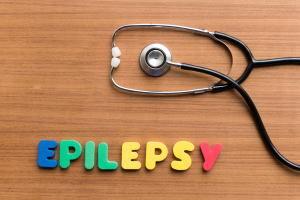What To Do When Someone Has A Seizure
Click here to download a printed version
Over a lifetime, 1 in 26 people will be diagnosed with epilepsy. More than 30% of people with epilepsy will experience generalized seizures. When providing first aid for seizures, try to keep calm and make sure the person having the seizure is comfortable and safe from harm.
Call 911 if:
- The person has never had a seizure before.
- the person has difficulty breathing or waking after the seizure.
- The seizure lasts longer than 5 minutes.
- The person has a seizure back- to- back.
- The person is injured during the seizure.
- The person has an additional condition like diabetes, or heart disease.
- Ease the person to the floor.
- Turn the person gently onto the side (this will help the person breathe).
- Clear the area around the person of anything hard or sharp
- Put something soft and flat, like a folded jacket, under his or her head.
- Loosen ties or anything around the neck including button on a shirt.
- Time the seizure.
Do Not:
- Do not hold the person down or try to stop his or her movements.
- Do not put anything in the person’s mouth. This can injure teeth or the jaw. A person having a seizure cannot swallow his or her tongue.
- Do not try to give mouth-to-mouth breaths (CPR). People usually start breathing again on their own after a seizure.
- Do not offer the person water or food until he or she is fully alert.
After the seizure:
After the seizure ends, the person will probably be groggy and tired. He or she also may have a headache and be confused or embarrassed. Try to help the person find a place to rest. If necessary, offer to call a taxi, a friend, or a relative to help the person get home safely.
Don’t try to stop the person from wandering unless he or she is in danger.
Don’t shake the person or shout.
Stay with the person until he or she is completely alert.
Source: Centers for Disease Control and Prevention
Source: National Institute of Neurological Disorders and Stroke


